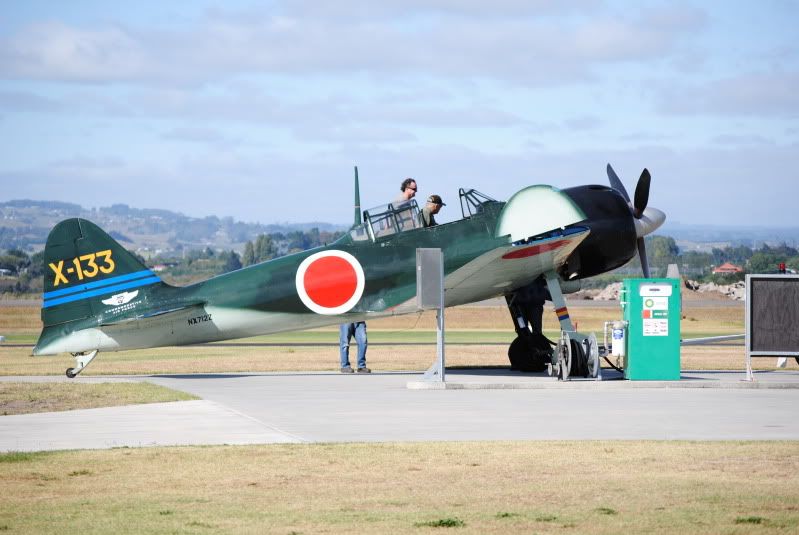Really excellent photographs!
If it is essentially a "New Build", then that might explain the smooth skin. The original Zero used a VERY thin gauge aluminum which tended to ripple and bend rather easily. Perhaps a thicker gauge was used on this aircraft?
FWIW, the original Sakae engine was about 1700 cubic inch displacement and good for about 950 HP tops in this model. The later engines offered nominally more power, but in comparing their output at altitude, there wasn't all that much of an improvement. Trying to quantify their actual performance isn't easy. There are too many contradictory reports.
Of all the models of the Zero, I prefer the A6M5 model 52a (Koh) the best. Weight was still fairly low but it carried more ammunition 125 rounds each for the cannons instead of the pitiful 60 rounds each (3 squirts or so) for the earlier planes.
- Ivan.
If it is essentially a "New Build", then that might explain the smooth skin. The original Zero used a VERY thin gauge aluminum which tended to ripple and bend rather easily. Perhaps a thicker gauge was used on this aircraft?
FWIW, the original Sakae engine was about 1700 cubic inch displacement and good for about 950 HP tops in this model. The later engines offered nominally more power, but in comparing their output at altitude, there wasn't all that much of an improvement. Trying to quantify their actual performance isn't easy. There are too many contradictory reports.
Of all the models of the Zero, I prefer the A6M5 model 52a (Koh) the best. Weight was still fairly low but it carried more ammunition 125 rounds each for the cannons instead of the pitiful 60 rounds each (3 squirts or so) for the earlier planes.
- Ivan.

